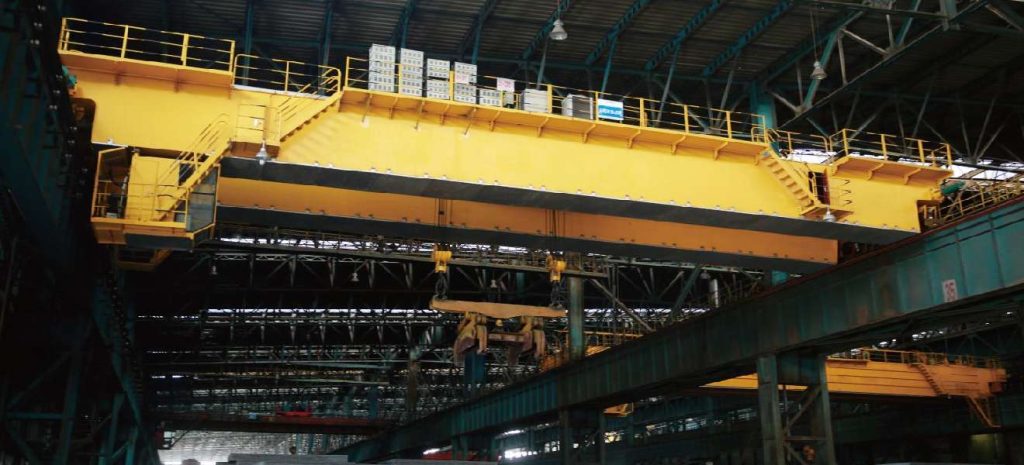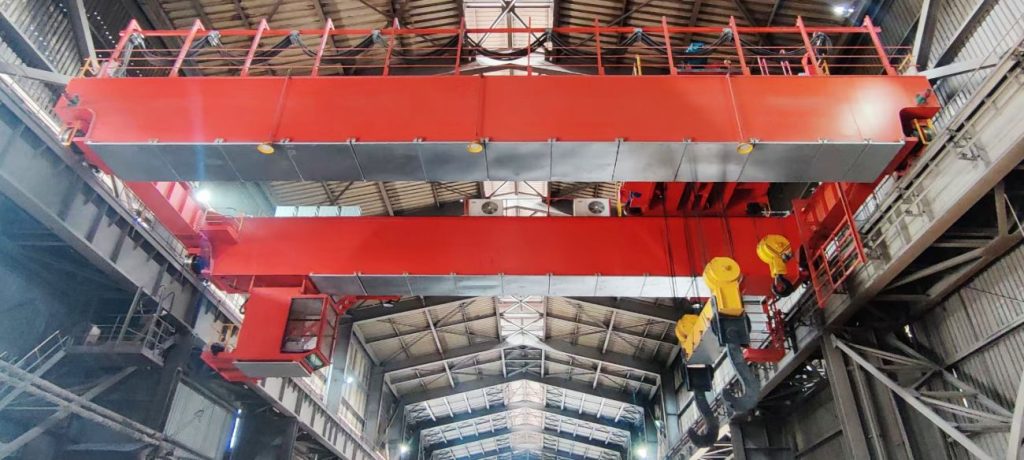In the realm of industrial lifting and material handling, 100 ton overhead cranes represent the epitome of strength, precision, and reliability. These cranes are pivotal in industries that require the movement of massive loads, such as steel manufacturing, shipbuilding, and heavy equipment production. Ensuring the structural integrity of these behemoth machines is crucial for safety, efficiency, and longevity. This article delves into the innovative advancements in the construction of 100 ton overhead cranes, highlighting how these innovations contribute to their robust performance and reliability.
The Importance of Structural Integrity
Structural integrity in overhead cranes is paramount due to the immense loads they handle. Any compromise in structural components can lead to catastrophic failures, risking lives, damaging property, and disrupting operations. Therefore, the construction of 100 ton overhead cranes involves meticulous engineering, advanced materials, and cutting-edge technology to ensure they can withstand the demanding conditions of industrial environments.

Innovations in Materials
High-Strength Steel Alloys
Enhanced Load-Bearing Capacity: Modern 100 ton overhead cranes are constructed using high-strength steel alloys that offer superior load-bearing capacity. These alloys provide the necessary strength to support heavy loads without excessive weight, improving overall crane efficiency.
Corrosion Resistance: High-strength steel alloys are often treated with coatings or combined with elements like chromium to enhance their resistance to corrosion. This is crucial for cranes operating in harsh environments, such as maritime or chemical industries.
Composite Materials
Lightweight and Strong: The use of composite materials, such as carbon fiber-reinforced polymers, is becoming more prevalent in crane construction. These materials offer an excellent strength-to-weight ratio, reducing the overall weight of the crane while maintaining structural integrity.
Vibration Damping: Composite materials also provide superior vibration damping properties, reducing the stress on structural components and improving the longevity of the crane. 100 ton overhead crane is heavy duty overhead crane used to handle heavy loads from one place to another, and it is produced with high quality materials to ensure the reliable performance.
Advanced Engineering Techniques
Finite Element Analysis (FEA)
Precision Engineering: FEA is a computational technique used to predict how a structure reacts to external forces, vibration, heat, and other physical effects. By applying FEA in the design phase, engineers can optimize the crane’s structure for maximum strength and durability, identifying and mitigating potential weak points.
Stress Analysis: FEA allows for detailed stress analysis, ensuring that each component of the crane can withstand the maximum loads it will encounter. This analysis helps in designing cranes that are not only strong but also efficient and economical.

Computer-Aided Design (CAD)
Detailed Modeling: CAD software enables engineers to create detailed 3D models of 100 ton overhead cranes. These models facilitate thorough inspection and refinement of the crane design, ensuring all components fit together perfectly and function as intended.
Simulation and Testing: CAD models can be subjected to virtual simulations and tests, allowing engineers to study the crane’s performance under various conditions. This preemptive testing phase helps in identifying and rectifying potential issues before manufacturing.
Innovative Construction Methods
Modular Construction
Ease of Assembly: Modern cranes are often designed with modular construction techniques, where components are prefabricated and then assembled on-site. This approach simplifies the construction process, reduces assembly time, and ensures precision in the final build.
Scalability and Maintenance: Modular construction allows for easy scalability and customization of the crane according to specific needs. It also facilitates easier maintenance and replacement of individual components without dismantling the entire overhead bridge crane.
Automated Welding Techniques
Precision and Consistency: Automated welding robots are used in the construction of 100 ton overhead cranes to ensure precision and consistency. Automated welding reduces the risk of human error, resulting in stronger and more reliable welds.
Quality Control: Automated welding processes are equipped with real-time quality control systems that monitor the welding parameters and detect any deviations. This ensures that the welds meet the highest standards of quality and strength.
Advanced Control Systems
Programmable Logic Controllers (PLCs)
Automated Operations: PLCs are integral to the automation of crane operations, providing precise control over lifting, lowering, and moving loads. These controllers can be programmed to execute complex sequences, enhancing operational efficiency and safety.
Real-Time Monitoring: PLCs enable real-time monitoring of crane performance, including load weight, position, and speed. This data can be used to optimize operations and ensure the crane is functioning within safe parameters.
IoT and Smart Technologies
Predictive Maintenance: The integration of Internet of Things (IoT) sensors in cranes allows for continuous monitoring of the crane’s condition. These sensors collect data on various parameters, such as temperature, vibration, and load stress, enabling predictive maintenance and reducing downtime.
Remote Diagnostics and Control: IoT connectivity allows for remote diagnostics and control of the crane, providing operators and maintenance teams with the ability to troubleshoot issues from a distance. This reduces the need for on-site interventions and enhances overall efficiency.
Aicrane, as a reliable crane supplier, is committed to providing high quality overhead cranes with advanced and smart technologies. You can know more about Aicrane overhead cranes while you are searching for details about the cranes and choosing a crane solution.
Safety Innovations
Advanced Safety Features
Load Monitoring Systems: Modern cranes are equipped with advanced load monitoring systems that provide real-time data on the weight and distribution of the load. These systems prevent overloading and ensure safe lifting operations.
Anti-Sway Technology: Anti-sway technology minimizes the swinging of loads during lifting and movement, reducing the risk of accidents and improving operational precision.
Emergency Stop Systems
Instant Response: Emergency stop systems are critical for ensuring the safety of crane operations. These systems allow operators to immediately halt all crane movements in case of an emergency, preventing accidents and protecting personnel and equipment.
The construction of 100-ton overhead cranes has seen significant advancements in materials, engineering techniques, construction methods, control systems, and safety features. These innovations ensure that modern cranes are not only strong and reliable but also efficient, safe, and adaptable to the demanding requirements of various industrial applications. As technology continues to evolve, the structural integrity and performance of overhead cranes will only improve, providing even greater benefits to industries worldwide. Investing in these advanced cranes is a strategic decision that enhances operational efficiency, safety, and longevity, ensuring a robust and reliable solution for heavy lifting needs.